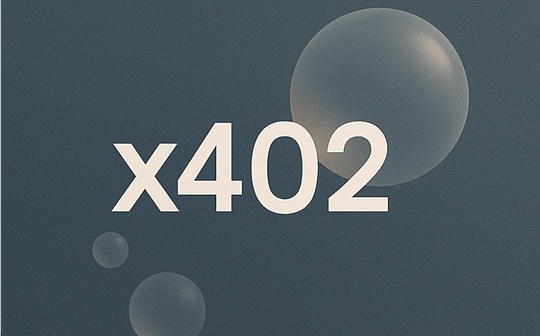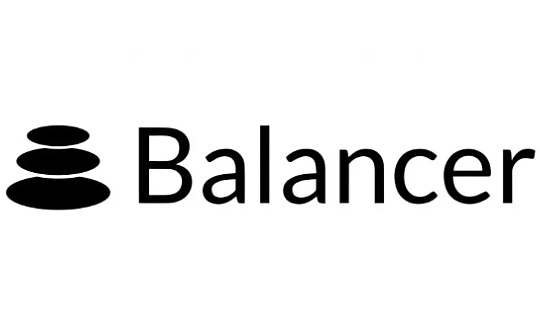
1. Introduction: The rise of market intervention and the decline of natural forces
The essence of financial markets is to allocate resources through price signals. However, over the past two decades, developed economies, especially the US financial system, have undergone profound changes: from respecting natural market forces, business cycles and price discovery mechanisms to continuous central intervention to support asset prices.This intervention aims to avoid the arrival of economic “winter” and pursue a “permanent summer” in asset markets.However, the deeper the intervention, the more serious the market deformation will be, and the weaker the price discovery function will be, eventually giving rise to asset bubbles.The Internet bubble of 2000, the housing bubble of 2008, and the current market known as the “Everything Bubble” all stem from the extremes of this logic.After the COVID-19 epidemic in 2020, unprecedented fiscal and monetary stimulus pushed this transformation to the extreme. Although the world’s major stock indexes hit new highs repeatedly from 2023 to 2025, valuation multiples have reached historical extremes and are out of touch with fundamental support.
Based on the latest macro data, central bank policy dynamics, consumer behavior indicators and wealth distribution statistics, this article systematically analyzes the process, mechanism, consequences and potential risks of this evolution.
2. Historical context and quantitative performance of market intervention
2.1 From Greenspan to Powell: The establishment of the intervention paradigm
After “Black Monday” in 1987, Federal Reserve Chairman Alan Greenspan explicitly proposed the “Greenspan Put” for the first time: the central bank would step in to support the market when the market fell sharply.Since then, each crisis has been accompanied by more radical intervention:
-
2000-2002 Internet Bubble Burst
The Federal Reserve lowered the federal funds rate from 6.5% to 1%, and continued low interest rates fueled a real estate bubble.
-
2008 global financial crisis
The Federal Reserve’s balance sheet expanded from US$0.9 trillion to US$4.5 trillion, launched QE1-3, and cut the federal funds rate to zero.
-
Impact of the epidemic in 2020
The Federal Reserve’s balance sheet surged from US$4.2 trillion to nearly US$9 trillion in 18 months, the federal funds rate was set to zero, and unlimited QE and corporate credit facilities were launched.On the fiscal side, the U.S. Congress passed a stimulus bill of approximately US$5.3 trillion, accounting for approximately 25% of GDP.
As of October 2025, the Fed’s balance sheet remains at around $7.2 trillion, about 70% higher than before the epidemic.The European Central Bank and the Bank of Japan also maintain ultra-loose policies, and the total global central bank assets accounted for GDP increased from 10% in 2008 to more than 35% in 2025.
2.2 Upgrading of intervention tools and passivation of market feedback mechanisms
Intervention tools have been expanded from traditional interest rate regulation to:
-
Asset Purchase (QE)
Directly purchase treasury bonds, MBS, corporate bonds, and ETFs.
-
Forward Guidance
Promise long-term low interest rates.
-
macro-prudential policy
Countercyclical capital buffers, stress testing.
-
fiscal-monetary coordination
Such as helicopter money in the US CARES Act.
Market sensitivity to intervention is significantly reduced.The “Taper Tantrum” in 2013 caused the 10-year U.S. bond yield to soar from 1.6% to 3%. However, when the Federal Reserve raised interest rates by 500 basis points in 2022, the 10-year U.S. bond yield only rose from 1.5% to a peak of 5% in October 2023 and then fell rapidly, indicating that the market has formed expectations that “the central bank will not let assets plummet.”
3. Evidence that asset prices are divorced from fundamentals
3.1 Historical quantiles of valuation indicators
As of October 31, 2025:
-
S&P 500 Price to Earnings Ratio (TTM)
28.4 times, 97th percentile in history (since 1928).
-
CAPE ratio (Shiller price-to-earnings ratio)
37.8, second only to 44.2 in 1999.
-
dividend yield
1.22%, the 8th percentile historically.
-
Buffett indicator (total market capitalization/GDP)
195%, the 99th percentile in history.
-
Nasdaq 100 Index P/E Ratio
35.6 times, the concentration of technology stocks is the highest since 1968.
3.2 Divergence between corporate profits and valuation
S&P 500 earnings per share in fiscal 2025 are expected to be US$245, an increase of about 40% compared with before the epidemic in 2020, but the index has increased by more than 150%.Profit growth was mainly concentrated in the “Magnificent 7”, while the remaining 493 companies only saw profits increase by about 15%.Excluding technology giants, the S&P 500’s P/E ratio drops to 18 times, close to the long-term average.
3.3 Bond market distortions
After briefly turning positive in 2022, the real yield on the 10-year U.S. Treasury note turned negative again (-0.8%) starting in 2024, showing that investors are willing to accept a loss of real purchasing power in pursuit of nominal safe assets.Credit spreads (high-yield bonds and treasury bonds) are at their lowest range since 2007, and the junk bond default rate is only 3.1%, well below the historical average of 6%.
4. Structural amplification of wealth inequality
4.1 The huge gap between mean and median
Data from the Federal Reserve’s Survey of Consumer Finances (SCF) 2022 show:
-
Average retirement account balance for people aged 55-64
$537,000.
-
Median Balance
$185,000.
-
No retirement savings ratio
37% (about 48 million people).
Updated data in 2024 shows that the median has further dropped to US$168,000, and 33% of people still have no savings.
4.2 Distribution of benefits from rising asset prices
From 2020 to 2025, the net worth of American households will increase from US$118 trillion to US$165 trillion, an increase of 40%.But the increments are highly concentrated:
-
top 1% families
Net assets increased by 55%, accounting for 45% of the total increase.
-
Top 10% of households
Accounting for 78% of the total increase.
-
Bottom 50% of households
Net assets only increased by 15%, and the average per capita was less than US$30,000.
Stocks and real estate are the main drivers.The top 10% of households hold 92% of stock assets, while the bottom 50% hold only 1%.
4.3 Risks of K-shaped recovery evolving into I-shaped economy
The post-epidemic economy shows K-shaped characteristics: asset holders (the upper half) have experienced a surge in wealth due to rising stock markets and housing prices; wage dependents (the lower half) have faced inflationary erosion.If the policy continues to favor asset price support, the K-type may solidify into the I-type: a very small number of elites (“dots”) are completely separated from the vast majority of ordinary people (“vertical lines”), forming a de facto new aristocratic class.
5. Real-time signals of consumer financial stress
5.1 Retirement account hardship withdrawals surge
Data from 401(k) plan administrator Vanguard shows:
-
Applications for hardship withdrawals will increase by 42% year-on-year in 2024, and will increase by another 28% in the first three quarters of 2025.
-
Average withdrawal amount: $12,000, accounting for 15%-20% of account balance.
-
Top reasons: Medical expenses (38%), eviction/foreclosure prevention (31%), tuition (18%).
5.2 Student loan repayment crisis
After student loan repayment resumes in October 2023:
-
Total number of borrowers
About 43 million people (the original figure of 60-70 million is a misinformation).
-
Overdue rate
In Q2 of 2025, it will reach 18.3%, a sharp increase from 0.5% before the restart.
-
30 days overdue rate
31% (New York Fed data).
-
wage garnishment cases
The first nine months of 2025 will see a year-on-year growth of 380%.
Student loans cannot be liquidated in bankruptcy, and the government can directly garnish wages, tax refunds, and Social Security benefits, causing a chain reaction.
5.3 Deterioration of other consumer credit
-
Credit card overdue rate (90+ days)
Q2 2025 will be 3.9%, the highest since 2009.
-
Serious delinquency rates for car loans
5.2%, compared with 3.8% before the epidemic.
-
Mortgage delinquency rate
3.1%, which is low but double the level in 2023.
The New York Fed’s consumer credit panel shows that total household debt in Q2 2025 will reach 18.1 trillion US dollars, and the debt/disposable income ratio will be 98%. Although it is lower than the peak in 2008, the proportion of interest expenses will reach 11.5%, the highest since the 1990s.
6. The appearance and essence of GDP data
6.1 Distortions in the inventory cycle
Q2 GDP growth in 2025 is 3.0%, but:
-
Inventory contribution
+1.2 percentage points (Q1 was -0.8).
-
final sale (excluding inventory)
Only 1.8%, lower than expected.
-
personal consumption expenditures
Growth was only 1.4%, the weakest since 2023.
The inventory adjustment stems from companies stocking up in response to tariff expectations at the end of 2024. Q2 of 2025 will enter the destocking stage, and GDP data will be overestimated.
6.2 Early warning of leading indicators
-
Conference Board Leading Economic Index (LEI)
It has declined for 30 consecutive months, the longest record since the 1960s.
-
OECD composite leading indicators
The U.S. sub-item in September 2025 was 98.2, and a reading below 100 indicates the risk of recession.
-
yield curve
After the 10-year-3-month U.S. bond interest rate turned positive in September 2024, it briefly inverted again in 2025.
7. Accumulation and triggering mechanism of systemic risks
7.1 Bipolar market structure
Intervention causes the market to lose its “grayness”:
-
prosperity model
Risk assets have all risen, and volatility has been suppressed (the average VIX value will be only 13.5 in 2025).
-
crash mode
Liquidity dries up instantly, such as in March 2020 and September 2022.
After the U.S. stock market briefly fell by 8% in April 2025, the Federal Reserve quickly restarted its repurchase operations, and the market rebounded within two days, reinforcing the expectation that the central bank would bottom out.
7.2 Potential trigger points
-
Inflation returns
If the CPI returns to above 4%, the Federal Reserve will be forced to raise interest rates significantly, putting asset prices under pressure.
-
fiscally unsustainable
The U.S. federal debt/GDP ratio reaches 133%, and interest expenses are expected to be US$1.2 trillion in fiscal year 2025, accounting for 25% of fiscal revenue.
-
geopolitics
Sino-US technology war and energy crisis.
-
technical squeeze
Passive ETF and CTA trend following strategies account for more than 40% of trading volume and are prone to triggering flash crashes.
8. Policy choices and long-term consequences
8.1 Let the market clear vs. continue to intervene
In theory, allowing natural liquidation can eliminate “zombie companies”, squeeze out bubbles, and restore price discovery.However, political reality determines that policymakers tend to “delay the crisis”:
-
short term pain
The unemployment rate may rise to 15%-20%, and house prices may fall by 40%-60%.
-
long term returns
Capital is reallocated to productive areas and valuations return to reasonable levels.
However, no sitting politician wants to take responsibility for a “Great Depression-style” recession.
8.2 The need for structural reforms
-
tax policy
Increase capital gains tax and inheritance tax to curb the intergenerational solidification of wealth.
-
Education and Skills Training
Expand community college and vocational training subsidies.
-
housing supply
Deregulate zoning and increase affordable housing.
-
retirement system
Force automatic enrollment in 401(k) and increase the default contribution rate.
-
Antitrust
Split the super platform and restore market competition.
9. Conclusion: A wake-up call for the I-shaped economy
The current financial system has become highly dependent on central intervention, asset prices are seriously out of touch with fundamentals, and wealth concentration has reached its highest level since 1929.Consumer financial stress is reflected in real time through indicators such as early retirement account withdrawals, student loan defaults, and overdue credit cards.The inventory contribution to GDP growth masked weakness in final demand.
If the policy continues to “prioritize stability maintenance,” the K-shaped economy may evolve into an I-shaped economy in the next 10 to 15 years: a permanent separation between a very small number of protected elites and the vast majority of abandoned ordinary people.Not only is this structure economically unsustainable, it will also cause social unrest.The only way to avoid this outcome is to proactively adjust policy directions before a full-scale crisis breaks out, restore the market’s natural adjustment capabilities, and rebuild channels for equal opportunities.
Only by facing up to the costs of intervention and giving up the illusion of a “permanent summer” can financial markets return to health and the economic cycle resume its resource allocation function.Otherwise, when the next “winter” comes, it will no longer be a seasonal adjustment, but a systemic collapse.






